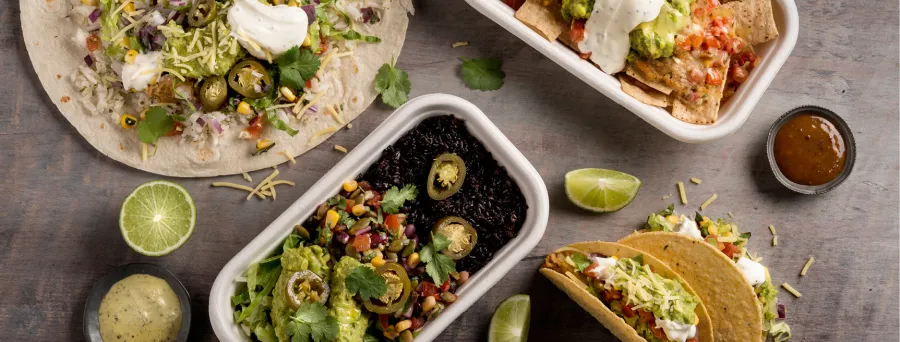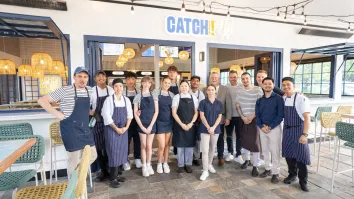
QSRs Reveal How They Balance Innovation and Tradition
The pressure is on for Australian QSRs to roll out new products. They are expected to change their business models to suit the changing preferences of consumers, but operators insist that their survival also hinges on sticking to their unique brand story.
This tense balancing act between pursuing innovation and keeping tradition is deeply felt at Mexican chain Zambrero. Having made a name for themselves for their healthy and delicious dishes, Zambrero puts in a lot of effort to push out new products that keep interest in the brand fresh while maintain the food quality that fans have come to expect.
“To be market leaders and achieve growth you cannot comprise on quality. Customers look to Zambrero for new and exciting products that are unique in the QSR space that focus on traditional Mexican ingredients,” says Karim Messih, CEO at Zambrero, “so there is never a trade-off between the brand story or evolving to meet market demands.”
Messih stresses that in coming up with new products, Zambrero always keeps in mind its tradition that started in Canberra in 2005. Founder Dr. Sam Prince saw a gap in the Australian market for fresh, healthy, and tasty Mexican food that catered to a range of dietary requirements and made this the pillar of the now-popular Mexican restaurant franchise.
“Zambrero’s roots are firmly planted so we will always be about fresh healthy Mexican food and our humanitarian Plate 4 Plate initiative” that looks to help end world hunger, says Messih. “With these foundations, we have plenty of scope to grow and evolve what we can offer our customers.”
Incremental changes
At The Coffee Club, introducing new offerings is vital to staying current and pulling ahead of the competition. But changes to the menu are rolled out incrementally and with a mind towards longevity instead of cashing in on the latest food trends.
“We introduce changes incrementally, strategically, and in a way that supports our short and long-term sales goals. In short, we introduce twists to classics and familiar favourites,” says The Coffee Club team. “Introducing new offerings helps us ride the wave of food trends without necessarily being a slave to them. For example, we won’t serve kimchi or roulette, which are popular dishes right now but may be out of favour in the years to come.”
One of the more creative aspects to The Coffee Club’s menu changes is the rollout of a seasonal menu or a national promotions menu which is served alongside the core menu. These seasonal promotions occur a few times annually, and run for one month to six or eight weeks at a time.
“If a promotional dish is a strong seller, then it may be added to the core menu in the future. This strategy speaks loudly to the effort we make to keep our menu relevant and interesting without introducing considerable changes that may drive away our loyalist customers,” says The Coffee Club team.
Brand repositioning
For Chatime, innovation came after a tough setback: The Australian market did not respond well to the “bubble tea” concept that had been popular across Asia. While there were Asian students and expats that responded warmly to “bubble tea” due to familiarity, it took a name shift to catapult Chatime’s popularity and sales.
“While we have kept the product true to what it is, we recently repositioned it as ‘a more exciting iced tea’ as opposed to ‘bubble tea’ to make it more familiar to western audiences,” says Carlos Antonius, general manager at Chatime. “This was communicated through a new brand platform of ‘You’ve never had iced tea like this before’ and new positioning line ‘The home of freshly brewed iced tea.’”
As part of its rebranding campaign, Chatime overhauled their menu to simplify the ordering process for customers that were new to the market. Some products were also renamed to improve clarity and entice customers. These efforts led to an immediate 12.4% increase in sales on the same month in 2015.
Technological leaps
The rise of new technology has also enabled other QSR brands to also adapt new marketing and business models. Soul Origin, for example, has embraced modern technology through a yearlong partnership with the online ordering app Hey You.
“As part of this online ordering expansion we have just launched our online catering order site and looking at an online loyalty program,” says Chris Mavris, general manager at Soul Origin. “New market demands allow us to focus on online ordering but still remaining true to our mission, making all products fresh in-store daily. We are embracing innovation to better grow our customer base without compromising on our beliefs.”
But he notes that while Soul Origin has fast-tracked innovations in online ordering, these remain firmly grounded in its core brand story. “Soul Origin believes in the tradition of eating mindfully, filling up on fresh, nutritious, simple food. Vast amounts of food on display waiting to entice and tempt the consumer through the visual merchandising is a big part of who Soul Origin is.”
A complementary mindset
For QSR brands, the biggest challenge of innovation is to find a way to create fantastic new products and initiatives without discarding the tradition that customers treasure.
“’Tradition' and 'innovation', two terms that would otherwise be seen as contradictory, can actually complement each other,” says Fernando Pimentel, global marketing manager at Coffee Emporium. “Our classic cold beverage recipes have been deconstructed and re-interpreted in creative ways that bring a new spin to old classics like, for example, our milkshakes and frappes.”
“Our product offerings are constantly being reviewed in search for solutions that meet our guest's needs and wants, and so that they may remain fresh and relevant,” he adds.
Pimentel reckons that at the end of the day, QSRs can ask one question to determine whether it is pursuing the right mix of innovation and tradition: Does it make sense for the brand’s narrative?
“Some brands have clearly positioned themselves as highly innovative brands and it would really not make any sense for them to try to tap into the tradition of things as it would not stick with consumers. The same principle applies to some brands who rely heavily on their heritage as a means of conveying a sense of tradition and expertise in their chosen field.”
“It really comes down to how a brand can incorporate these two elements into its narrative and, most importantly, if there is a fit for a brand to explore both angles concurrently.”
Photo credit: Zambrero Facebook page

























